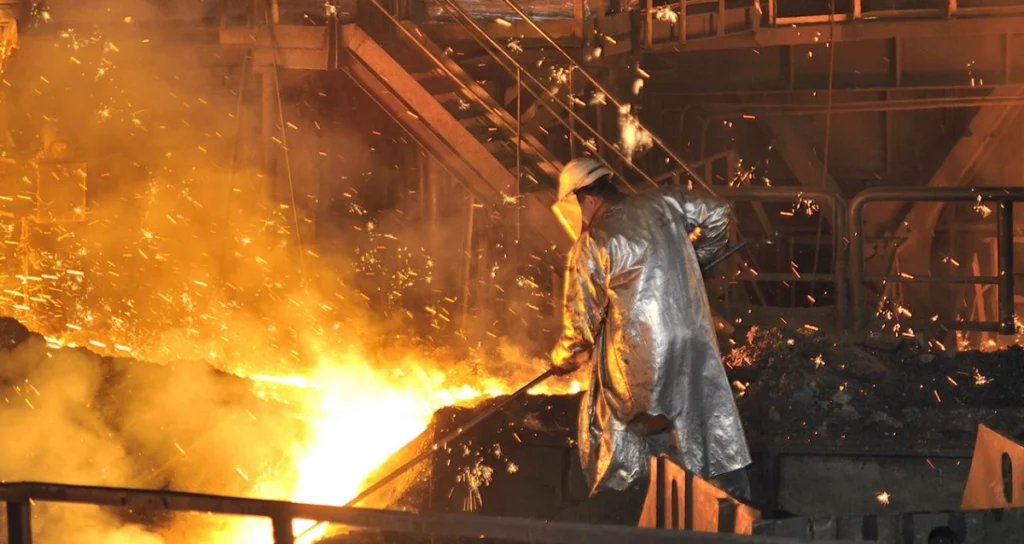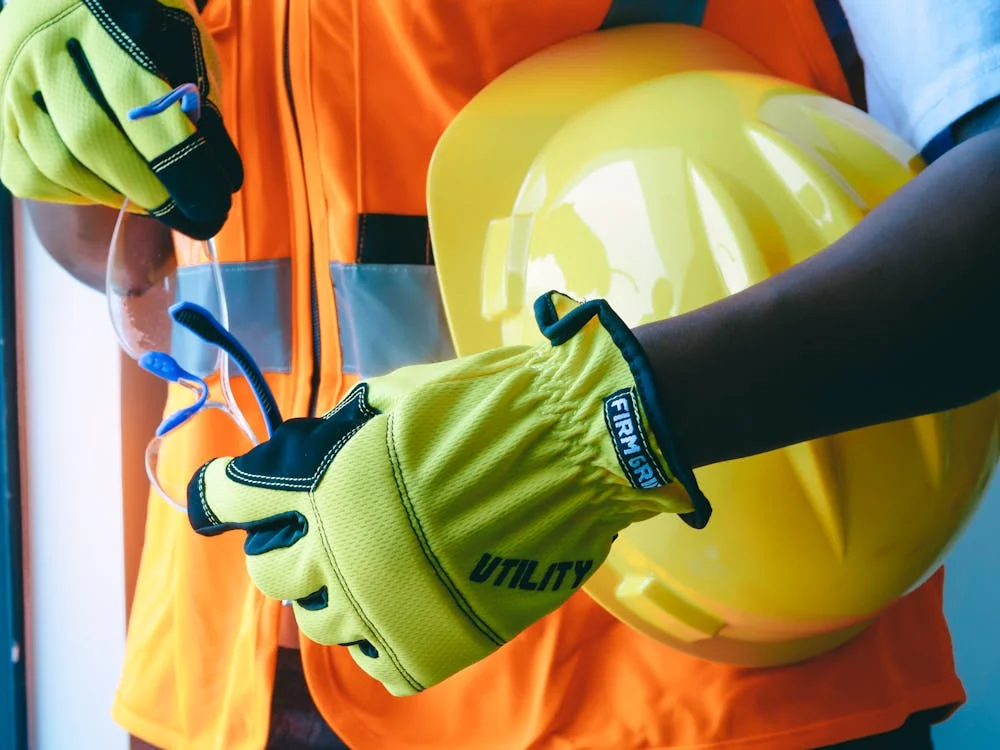
Walk onto a modern construction site, an oil rig, or even a logistics warehouse today, and you’ll notice something new: workers are no longer just wearing fabric—they’re wearing technology.
Helmets that detect fatigue. Vests with GPS trackers. Boots that can alert supervisors when a worker enters a dangerous zone. This is the rise of smart workwear—the merger of traditional PPE with IoT and sensor technologies.
For distributors, agents, and contractors, this isn’t a futuristic dream. It’s happening right now, and it’s reshaping how safety gear is purchased, managed, and valued.
Smart workwear integrates IoT and sensor technologies into traditional PPE to improve safety, productivity, and compliance. Examples include helmets with fatigue detection, vests with GPS tracking, and boots with hazard alerts. Adoption is growing in sectors like construction, mining, and oil & gas. While costs and data security remain challenges, distributors who embrace smart PPE early can win contracts and long-term clients.
Why Smart Workwear is Emerging Now
Smart PPE adoption is no accident—it is driven by several converging forces:
-
Rising workplace risks and safety standards
In high-risk industries such as mining, oil & gas, and construction, accident rates remain high. International regulations (OSHA, ISO, EU directives) are pushing companies toward real-time monitoring solutions. -
IoT and sensor technology becoming affordable
Ten years ago, embedding GPS or biometric sensors in clothing was too expensive. Today, thanks to advances in semiconductors and wireless connectivity, costs have dropped by over 60% in the last decade. -
Data-driven decision making
Companies are beginning to view PPE not just as a consumable but as a data platform. Smart PPE can measure fatigue, exposure to toxic gases, or track compliance—helping managers cut accidents and optimize schedules. -
Corporate ESG and investor expectations
Large multinational contractors must demonstrate their commitment to Environmental, Social, and Governance (ESG) reporting. Using smart PPE provides auditable proof that workers’ health and safety are actively monitored. -
Insurance and cost pressure
Insurance companies increasingly offer lower premiums to firms that use technology-driven safety systems. This creates a financial incentive for smart workwear adoption.
Industry Sectors Leading the Shift
Smart workwear is not spreading evenly—it’s strongest in industries where risks are highest and margins justify investment:
- Construction → Especially mega-projects in Africa, Middle East, and Asia, where safety audits are strict.
- Oil & Gas → Refineries, offshore rigs, and pipeline projects with high fire and explosion risks.
- Mining & Metals → Harsh underground environments, exposure to toxic gases, and fatigue management.
- Logistics & Warehousing → Long shifts, heavy lifting, accident prevention via exoskeletons and fatigue sensors.
- Utilities & Energy → Power plants, renewable energy projects, and grid maintenance with strict compliance.
Market Outlook
According to MarketsandMarkets, the global smart PPE market is projected to reach USD 8.2 billion by 2030, growing at over 15% CAGR. Emerging markets—Africa, Middle East, Central Asia, South America—are expected to be the fastest-growing regions due to large-scale infrastructure projects and foreign investment.
For distributors in these regions, being the first to introduce smart workwear solutions can build a strong moat against competitors.
Real-World Use Cases of Smart Workwear
To understand the impact, let’s look at how smart PPE is already being used across industries.
Case #1 – Smart Helmets in Mining, Kazakhstan
A mining company deployed helmets with integrated sensors that measured worker fatigue and detected harmful gases. When a worker showed signs of drowsiness, supervisors received alerts in real time.
Result: Accident rates dropped by 25% in just six months, and insurance premiums decreased the following year.
Case #2 – GPS Vests in Construction, UAE
On a Dubai skyscraper project, workers wore vests equipped with GPS trackers and proximity sensors. The system alerted workers and crane operators if someone entered a danger zone.
Outcome: Two near-miss incidents were avoided in the first month, giving international auditors confidence in the contractor’s safety standards.
Case #3 – Smart Boots in Oil & Gas, Nigeria
Offshore rig workers tested smart boots with pressure sensors that detected slips and fall risks. Data collected over weeks helped managers redesign walkways and improve grip surfaces.
Lesson: Instead of being just protective, boots became a diagnostic tool for workplace design.
Case #4 – Exoskeletons in Logistics, Brazil
A large warehouse introduced lightweight exoskeletons for workers lifting heavy packages. The devices reduced strain on the lower back.
Impact: Worker absenteeism due to back injuries dropped by 40%, and productivity increased.
Key Smart Workwear Products and Features
| Product | Smart Features | Benefit |
|---|---|---|
| Smart Helmets | Fatigue monitoring, gas detection, communication | Accident prevention, real-time alerts |
| GPS Safety Vests | Worker location, proximity alerts, fall detection | Reduced collision risks, compliance |
| Smart Boots | Pressure sensors, slip detection, location tracking | Fewer falls, safer navigation |
| Connected Gloves | Vibration alerts, biometric data | Detect overuse injuries, improve ergonomics |
| Exoskeletons | Support for heavy lifting | Injury prevention, higher productivity |
| Wearable Sensors | Heart rate, temperature, exposure to hazards | Health monitoring, early intervention |
Compliance and Standards
Unlike traditional PPE, smart workwear is still navigating fragmented regulations:
- OSHA (US) and EU Directives: Encourage adoption of monitoring tech but lack unified standards.
- ISO/IEC 27001: Relevant for data security since smart PPE collects sensitive worker data.
- ATEX Certification: Required for smart PPE used in explosive environments (oil & gas, mining).
- CE/ANSI Standards: Traditional compliance still applies to the fabric and protective functions.
Challenge: Distributors must not only prove that workwear is safe but also ensure the software and data handling comply with local privacy and safety laws.
Challenges and Barriers to Adoption
While smart workwear is promising, it faces hurdles:
-
High upfront cost
Smart PPE can cost 3–5 times more than traditional gear. Buyers need to be convinced of ROI. -
Battery and durability issues
Harsh environments (dust, water, extreme heat) shorten sensor lifespans. Products must pass real field tests. -
Data privacy and worker acceptance
Workers sometimes resist GPS trackers, fearing surveillance. Transparent communication is key. -
Integration with existing systems
Many contractors lack the IT infrastructure to handle real-time PPE data. This slows adoption. -
Supplier credibility
The market is young. Some products are prototypes disguised as “commercial solutions.” Buyers must carefully vet suppliers.
Buyer FAQ: Smart Workwear
Q1: Is smart PPE mandatory in any country?
A: Not yet. However, many international contractors and oil majors require technology-based safety systems to qualify for tenders. It’s moving from “optional” to “expected.”
Q2: How long do smart wearables last in harsh conditions?
A: Most smart helmets and boots are designed for 12–24 months of use, depending on battery cycles and environmental stress. Durability varies—field testing is essential before bulk orders.
Q3: Do workers resist wearing smart PPE?
A: Sometimes, yes. Concerns include privacy and comfort. Success stories show adoption improves when management explains the safety benefits and ensures data isn’t misused.
Q4: Can smart PPE be integrated with existing safety systems?
A: Yes. Many smart wearables now connect to cloud dashboards, which can be integrated into standard EHS (Environment, Health & Safety) platforms.
Procurement Checklist for Smart Workwear
- [ ] Verify both traditional PPE compliance (CE, ANSI, EN) and electronic certifications (ATEX, IEC).
- [ ] Test durability in local climate conditions (heat, dust, humidity, cold).
- [ ] Check battery life and charging systems—look for minimum 8-hour runtime.
- [ ] Confirm data privacy compliance with local laws (GDPR, African data regulations, etc.).
- [ ] Start with pilot orders (100–200 units) before scaling.
- [ ] Evaluate supplier after-sales service (firmware updates, repair options).
- [ ] Ask for real client references in similar industries.
ROI Analysis: Why Smart PPE Pays Off
| Scenario | Without Smart PPE | With Smart PPE | Annual Savings |
|---|---|---|---|
| Worker fatigue accident | $25,000 | $800 per helmet | $24,200 |
| Slip & fall injuries | $15,000 | $120 per smart boots | $14,880 |
| Missed safety compliance audit | Project delays ($100k+) | Automated data logs | Avoided penalties |
| Worker insurance premium | High | Discounted (–10%) | Thousands saved |
Smart PPE isn’t just about compliance. It’s about reducing downtime, avoiding lawsuits, and cutting insurance costs. For large projects, the ROI becomes clear within the first year.
Conclusion
The era of smart workwear is here. From helmets that detect fatigue to boots that prevent slips, IoT-powered PPE is transforming how companies protect workers and measure productivity.
For distributors and buyers in emerging markets, this isn’t just a tech trend—it’s a competitive advantage. The players who embrace smart workwear early will win the trust of multinational contractors, secure long-term contracts, and stand out in a crowded PPE market.
📩 Looking for reliable smart PPE solutions from China?
Email: [email protected]
🌐 www.workwearsolutions.net
Zion Zhang
Recent Posts
 Antimicrobial & Self-Cleaning Fabrics: Hygiene in Food, Pharma & Healthcare2025年9月20日In industries where hygiene is non-negotiable—food […]
Antimicrobial & Self-Cleaning Fabrics: Hygiene in Food, Pharma & Healthcare2025年9月20日In industries where hygiene is non-negotiable—food […] Sustainable & Circular Workwear: Meeting ESG Demands in 20252025年9月20日Workwear has always been about safety and functionality, […]
Sustainable & Circular Workwear: Meeting ESG Demands in 20252025年9月20日Workwear has always been about safety and functionality, […] Cooling Fabrics for Hot Climates: Innovations for Africa & Middle East2025年9月20日Step into a construction site in Dubai at noon or a highway […]
Cooling Fabrics for Hot Climates: Innovations for Africa & Middle East2025年9月20日Step into a construction site in Dubai at noon or a highway […] Workwear for Central Asian Mining & Energy Projects2025年9月18日From the coal mines of Kazakhstan to the oil fields of […]
Workwear for Central Asian Mining & Energy Projects2025年9月18日From the coal mines of Kazakhstan to the oil fields of […] Workwear for South American Logistics & Warehousing: Comfort and Safety in Long Shifts2025年9月16日South America’s logistics and warehousing industry is […]
Workwear for South American Logistics & Warehousing: Comfort and Safety in Long Shifts2025年9月16日South America’s logistics and warehousing industry is […] Workwear in Africa’s Construction Boom: Demand, Trends, and Opportunities2025年9月16日Walk through any African city today, and you’ll see […]
Workwear in Africa’s Construction Boom: Demand, Trends, and Opportunities2025年9月16日Walk through any African city today, and you’ll see […]
CONTACT US
- Feel free to contact us any time. We will get back to you as soon as we can!
- +86-17330061805
